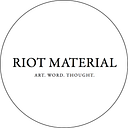Serpentine Fire: Radical Artists and Innovative Mediums
at Quotidian, Los Angeles
Reviewed by Genie Davis
With Serpentine Fire, now at Quotidian, curator and gallerist Jill Moniz has assembled an astoundingly innovative, resonant show from artists who have pushed the limits of their materials and subjects. The title of the show is taken from an Earth, Wind, & Fire song, and just as the band offered a breath of exciting fresh air with its early music, so does this exhibition.
The show is filled with the power and breadth of artists working in the city of Los Angeles. It seems almost infused with the surge of Santa Ana winds, the cataclysm that our rain storms can bring, iconic landmarks from Santa Anita to South Central, and the everyday rhythm of our streets. Exhibiting artists include Mel Edwards, Henry Taylor, Ed Love, Kori Newkirk, Umar Rashid, Lyndon Barrois, Glen Wilson, and Duane Paul.
Some of the works are current, others historic in nature; all of them are bold and fresh. The lay out of the show is galvanizing from the moment visitors walk in the door. The gallery’s rough-hewn quality of exposed brick, beams, and worn tile makes the perfect setting for art that is intensely from the heart; there is nothing ephemeral here.
A personal favorite was Lyndon Barrois “Untitled,” a prototype praxinoscope work. A rotating cylinder rotates rapidly, creating a visual effect that is similar to stop-motion animation. Amazingly, the 12 small jockeys on horseback spinning around at the artist’s touch are created from gum wrappers. The diminutive figures are taken from images in Barrois’ own digital film, They Were the First to Ride, also on exhibit at the gallery. The film takes a long look at the eleven black jockeys who won the Kentucky Derby from 1875 to 1902. Barrois has a long history of creating gum-wrapper art; here the medium looks rich and bright, the lightness of his medium contributing to the sense that the spinning figures on horseback are galloping. Barrois is a respected animator, and his gift is obvious. But it’s his use of such defiantly unconventional material, and the way in which it fuses with his narrative of virtually unsung heroes, that makes these works not just beautiful but transcendent.
Kori Newkirk’s “Black Letter Day” is a visceral grabber. The sculpture of upside-down umbrella shapes takes up a center space in the gallery; they’re disconcerting, both wrong and wonderful. As an artist, he’s known for his reconfiguration and transformation of everyday objects. He uses them as a palette of sorts, to explore race, gender, and place. The artist terms his work “ghetto-fabulous conceptualism,” and whether he’s using umbrellas as a sculptural form or creating city landscapes from a mosaic of plastic hair beads, his work re-makes common images and materials into something deeply thought provoking.
Henry Taylor creates boldly figurative painted work that offers a wonderfully personal look at life in Los Angeles. Each work is a slice of life, but one which addresses both cultural and racial themes. Using minimal environments, he depicts his subjects in simple ways that nonetheless alter a viewer’s perception of that individual. The narrative works are layered and dynamic images. In his recent work, “Green Light,” Taylor offers an image of a black man in profile, a green light in the far-left corner seeming symbolic of opportunities accessible but limited in nature — that light could change at any time. Behind him, a minimalist silhouette of the LA city skyline in a shadowy grey serves as a contrast to the vivid colors of the man’s clothes — red, white, and blue — and the deep black of his skin. It’s a memorable work in aesthetic and as a social statement. Taylor’s “Couple on a Couch” are basically featureless, but the pair are relaxing on a small gold sofa; the man is black, the woman curled with her head on his lap has pink and white skin. The simplicity of the piece is gorgeous: it’s the softly moving poetry of a relationship; the language of their bodies is all that matters, and anyone who cannot see that is excluded. . .
To read the rest of Davis’s review, go to Riot Material magazine: https://www.riotmaterial.com/serpentine-fire-radical-mediums/
And please follow us on Facebook: https://www.facebook.com/riotmaterial/
